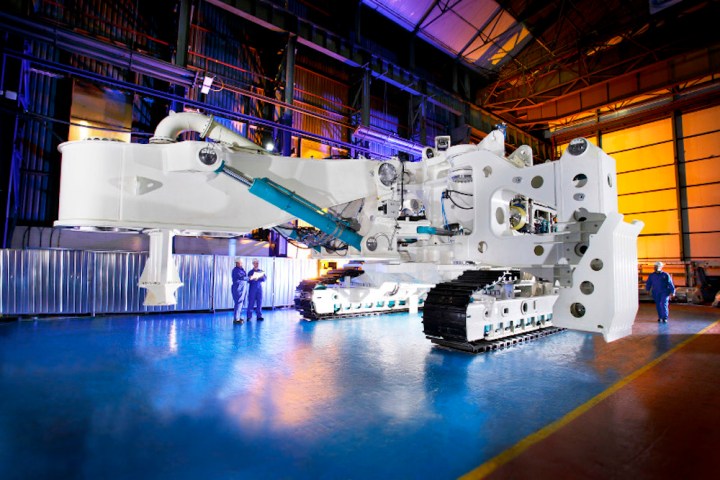
Though the term “deep-sea mining robots” seems like a relatively new development, Nautilus’ fleet has actually been ready to go since 2012. However, a minor dispute with the Papua New Guinea government kept the bots out of the Bismarck Sea until a proper deal could be struck between the two. Finally, in 2014, the two sides reached an agreement, giving Papua New Guinea intellectual property from the digs and Nautilus the ability to move forward with development of its mining force.

Perhaps the best part of the deal to move forward was the ability for Nautilus to secure nearly $140 million in financing for a massive, 745-foot robot deployment vessel. The ship, which was the first of its kind, is currently under construction in China and scheduled to set sail for Papua New Guinea by 2018. Once functional, the vessel will not only deploy the robot fleet, but will also possess the capability to process any deposits recovered during the digs.
Outside of the deployment vessel, Nautilus plans to make use of three separate mining robots, or Seafloor Production Tools (SPTs): the Auxiliary Cutter (AC), the Bulk Cutter (BC), and the Collecting Machine (CM). During a dig, the AC roams the terrain first, cutting through rough terrain in order to create what Nautilus calls “benches” for the other machines to work with. Then, the BC works near the created benches, cutting at a much higher capacity than the AC. Once the AC and BC finish their jobs, the CM covers the same area, collecting all material and deposits left on the sea floor.
As expected, Nautilus’ plans to dredge large chunks of the ocean floor don’t sit particularly well with marine biologists. While Nautilus claims it intends to study and protect the areas it’s going to operate in, proponents say the exact amount of damage such digging could cause is unknown. The loudest argument against the digging concerns the array of deep-sea ecosystems which are incredibly unique. To help with this, Nautilus says it will create refuge zones inside its leased area to facilitate recolonization.

If all goes according to plan and Nautilus indeed hits the high seas in search of hidden treasure, the company plans to spend roughly 30 months digging at a site called Solwara 1. Located just under 20 miles from Papua New Guinea’s New Ireland province and about a mile underwater, Solwara 1 is just one of 19 different sites the company has pegged as potential digging sites. During the operation, Nautilus plans on digging roughly 2.5 million metric tons of metals it says may be worth around $1.5 billion.
No official testing date has been chosen by Nautilus, though the company expects to begin shallow-water testing and rock cutting by mid-2016.


